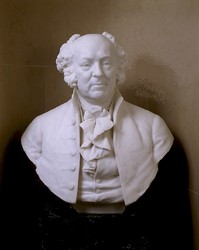John Adams Life
|
| updated |
Copy Link Code
|
 John Adams' life is a vital topic of study for those who wish to understand the American government and the birth of the nation. Adams was the first Vice President and the second President of the United States. He also signed the Declaration of Independence; negotiated the Treaty of Paris to end the Revolutionary War in 1783; served as the Minister to the Court of St. James (Ambassador to Britain); and wrote much of the Massachusetts Constitution of 1780. Adams was a heavily opinionated, well-educated, independent thinker who wrote and maintained a vast number of personal and political letters that make him accessible to the modern reader. Although Adams was not the most popular politician, he left an indelible mark on the structure and function of government in the United States.
John Adams' life is a vital topic of study for those who wish to understand the American government and the birth of the nation. Adams was the first Vice President and the second President of the United States. He also signed the Declaration of Independence; negotiated the Treaty of Paris to end the Revolutionary War in 1783; served as the Minister to the Court of St. James (Ambassador to Britain); and wrote much of the Massachusetts Constitution of 1780. Adams was a heavily opinionated, well-educated, independent thinker who wrote and maintained a vast number of personal and political letters that make him accessible to the modern reader. Although Adams was not the most popular politician, he left an indelible mark on the structure and function of government in the United States.
The life of John Adams began in 1735 in the north precinct of Braintree, Massachusetts (an area that would soon become Quincy, MA). He was born to a family of Congregationalists descended directly from early Puritan pilgrims to the Massachusetts Bay Colony and never forgot his connection to the ideals of these refugees from persecution. Adams' father was a Deacon as well as a cobbler, farmer, lieutenant in the militia and town selectman in charge of schools and roads. At age 16, Adams earned a scholarship to Harvard and pursued a degree in law. After graduating at the age of 20, he apprenticed under a Mr. Putnam of Worcester who allowed him access to the records of the Attorney General of Massachusetts. Soon after his admittance to the Bar, Adams took up the cause against the oppressive policies of Parliament. His essays against the Stamp Act were widely distributed and in 1770, Adams was elected to the Massachusetts Assembly. When the First Continental Congress met in 1774, Adams was one of five men selected to represent Massachusetts and quickly became a strong proponent of independence for the colonies. In 1776, he advised Thomas Jefferson on the writing of the Declaration of Independence and successfully defended its cause to the rest of the Continental Congress. After this, he began his diplomatic service abroad, first in France and then in Britain. Although he returned to help draft the Massachusetts Constitution, he was soon back in Europe for negotiations with the British on terms of peace.
John Adams' personal life was certainly hindered by his years of service, but his wife Abigail was also a committed patriot and she joined him for a time in Europe and then again during his service as Vice President in Philadelphia. They wrote hundreds of letters to each other on the hottest topics of the day and Abigail often gave John advice on the proper route to take. When John was President after his electoral victory in 1796, he made some decisions which were unpopular including avoiding war with France and signing the Alien and Sedition Acts into law. He lost his bid for re-election in 1800 to his old friend Thomas Jefferson and subsequently retired from politics. Adams died on July 4th, 1826 while his son, John Quincy Adams, was serving as the sixth President of the United States. Jefferson and Adams died on the same day after rekindling their friendship a decade before.
